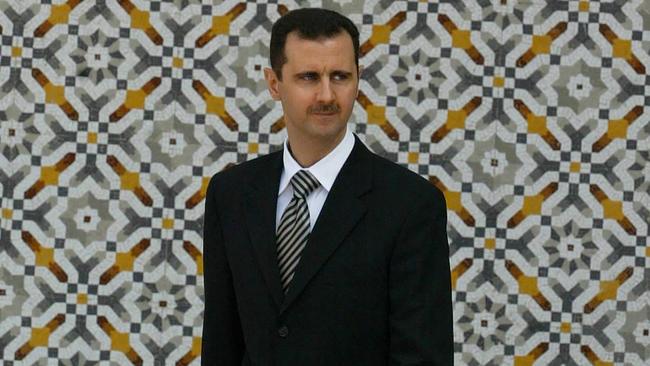‘Bigger than Nuremberg’: the secret files that could jail Assad
Thousands of pages of evidence reveal in detail the barbarity of the deposed dictator’s regime. The hunt for the perpetrators has begun.

First the euphoria, then the reckoning. A worldwide scramble is under way to track down Bashar al-Assad’s henchmen who implemented his reign of terror in Syria and start a justice process one war crimes investigator described as “bigger than Nuremberg”.
While Assad, his wife and children were spirited away by their Russian backers to safety in Moscow, thousands of officers in his military and security apparatus are believed to be fleeing for their lives.
The key to bringing them to justice is a stack of brown cardboard boxes behind a locked door in an office with no name in a European city. They may look innocuous but inside those 406 boxes are more than 1.3 million documents that could put Assad and his henchmen behind bars for life. The Assad archive has been amassed over the past 13 years by Canadian lawyer and war crimes investigator Bill Wiley, 61, and his team of Syrians who took astonishing risks to gather evidence and smuggle it out.
Disguised as shepherds and traders and using everything from trucks to rafts, they moved entire filing cabinets of paperwork through checkpoints. One paid with his life, another was injured, one was kidnapped by a rebel group. Several had to be taken out of the country to safety. Papers had to be left in hiding places as it was too dangerous to move them.
Despite the risks, hundreds of kilos at a time were brought out to be digitally scanned and analysed by Wiley’s organisation, the Commission for International Justice and Accountability, funded by the British, German and US governments.
The Assad regime documented everything and a chain of command signed off on what some have called a bureaucracy of death. “This is the most documented repression in history,” said Wiley. “Like the Nazis but with computers.”
Indeed, Assad’s father, Hafez, who ruled from 1970 to 2000, is said to have been advised in torture methods by a former Nazi, Alois Brunner, who sought refuge in Damascus after having served as deputy to the Holocaust architect Adolf Eichmann.
A tall sandy-haired man with a cigar almost constantly on the go, Wiley unlocks the room and opens boxes to reveal maps and papers. Many are embossed with the hawk of the Syrian regime or signed by Assad and officials.
They tell the story of a dictatorship that carried out 50 years of incarcerations, executions, disappearances, sexual abuse using objects and setting fire to testicles, and chemical weapons strikes on its own people.
No one knows how many it killed. The UN estimates that since 2011, more than 300,000 civilians have lost their lives and at least 100,000 Syrians have been forcibly disappeared.
“It was a bureaucratic killing machine. Killing those people was a bureaucratic, day-to-day business,” said Mohammad al Abdallah, a former prisoner who founded the Syria Justice and Accountability Centre in Washington, which also collects evidence.

They also photographed them. In August 2013, a Syrian military photographer code-named “Caesar” smuggled out about 55,000 pictures. His team photographed corpses of detainees – sometimes 50 a day – delivered to military hospitals from security services.
Each corpse had a unique four-digit number scrawled on tape or the forehead with a thick marker pen. Another number signified the intelligence branch in which the individual had been killed. Many had been beaten, mutilated, burnt, shot – and in some cases even melted. Last week, civil engineer Osama Othman was unmasked as the brave man who brought out Caesar’s photographs.
The paperwork proves beyond any doubt, said Wiley, that Assad was no mere figurehead. “We know from our documents Assad was directing things,” he said.
Among the papers are minutes from the central crisis management cell, which was set up by Assad in March 2011 to deal with the popular uprising.
This met almost every night and discussed strategies for crushing dissent. The cell requested reports from security committees and intelligence agents in each province. Documents in the cache show these reports coming in, decisions taken and commands going down, then reports back on the success of their repression.
“Minutes were taken to Assad’s personal office and a clerk would wait while he went through and we’d see in the marginalia ‘Do this, do this, don’t do this’,” said Wiley.
“That’s when we knew he was not just a figurehead but that he gave and received orders.”
Although Assad has been given sanctuary in Moscow, along with former clients such as ex-Ukrainian president Viktor Yanukovych, Wiley is convinced Putin will hand him over within three years.
“We’ve seen this before where a dictator loses power and is given refuge in an allied state but has no value to that state and becomes a liability. That’s what happened to Charles Taylor [of Liberia] and Laurent Gbagbo of Cote d’Ivoire. It will happen to Assad. I give it three years.
“The Russians are going to want to deal with the new authorities in Syria to keep their naval and airbases, which they need for operations in Libya and central Africa; Assad may be thrown in as a sweetener.
THE TIMES



To join the conversation, please log in. Don't have an account? Register
Join the conversation, you are commenting as Logout